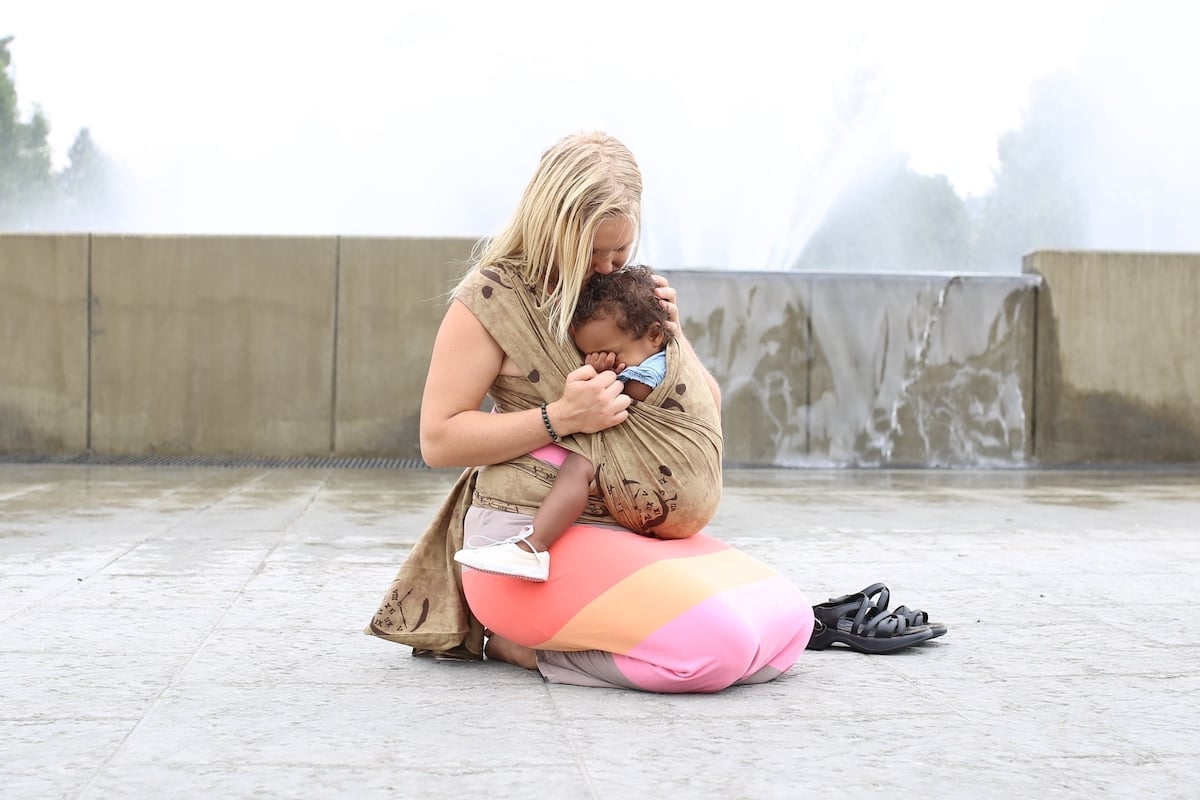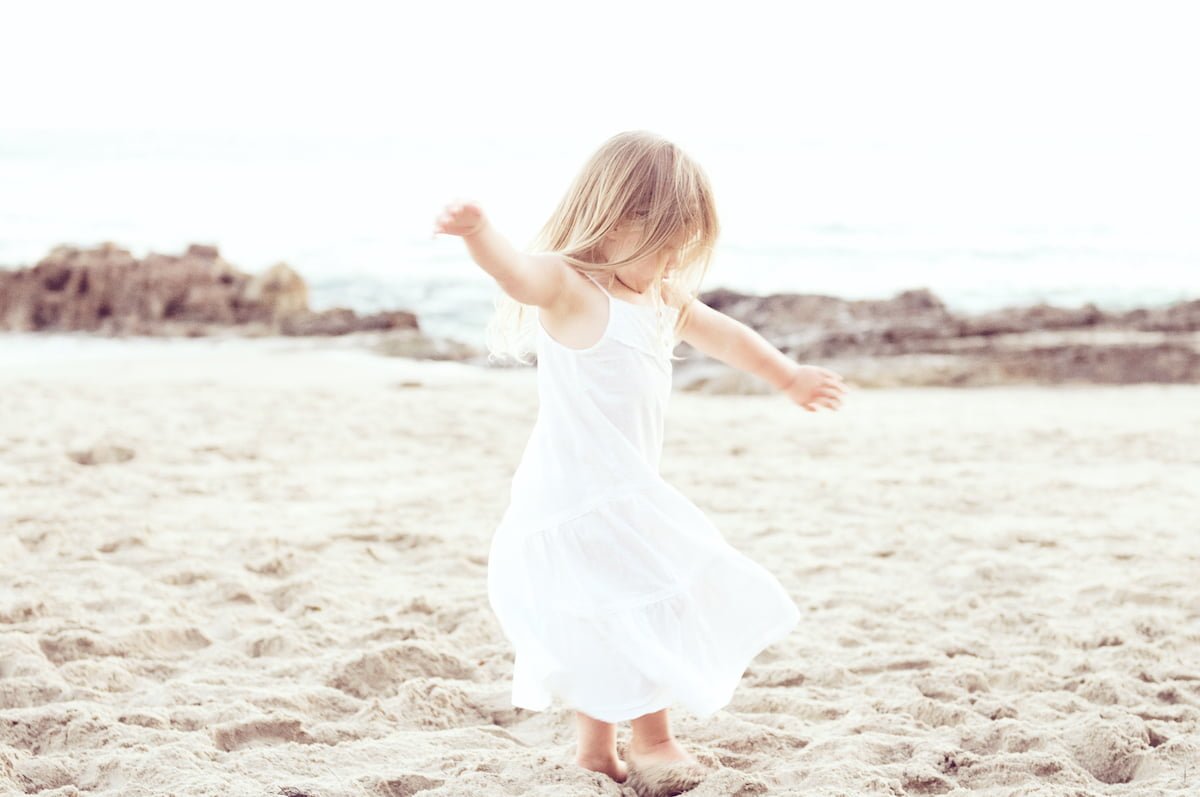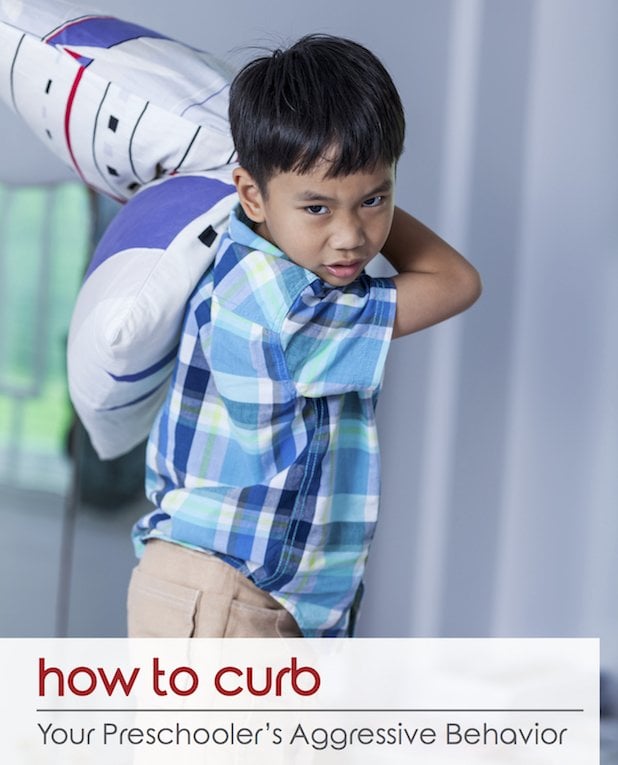Positive Discipline for the Early Years: Ages 1-7 years old
Positive parenting expert Kelly Bartlett shares common behavior challenges parents face with small children during the early years and positive discipline tips for handling them effectively.

When it comes to children’s difficult behavior, a parent’s first question is usually, “What should I do?” We tend to want to eliminate it, fix it, or get it under control.
But it’s important to understand that the behaviors we see in our children are merely the tip of the iceberg; the bulk of behavior issues stem from below the surface.
What we see is just a natural extension of the development occurring underneath. Rather than fight against it, parents will find more success in taking a positive discipline approach to working with a child’s development.
Take a look at these four examples of the earliest stages of child development to understand a “working with” approach rather than a “doing to” approach to natural discipline.
Age 1: My baby doesn’t listen to “No”
From birth to age two is a child’s sensorimotor stage of development. During this age, children are hard-wired to explore their environment using all of their senses. This means they will touch, pick-up, grab, bite, pinch, throw, smear, and put absolutely everything they can into their mouths in an effort to understand the world around them.
This exploration may mean that someone gets hurt, property is destroyed, or the child’s own safety is compromised. It’s not purposeful, and it’s not malicious. It’s simply a baby’s underdeveloped instinct to learn.
It’s tempting to think that the more often or more firmly you tell a young child no, the more she will remember it and behave differently next time. But a one-year-old child does not have mature enough brain development to stop herself from adhering to a no.
So, no matter how many times you tell her, she simply does not have the neural connection to stop, remember your words, think through the options, and decide not to act. It’s not that babies don’t listen, it’s that they lack sufficient brain development to acknowledge, comprehend, and think logically about a “No.”
Positive Discipline Tips for Working With “Yes” and “No”
Try working with your baby’s natural inclination to explore and learn by being proactive. Create a “yes” environment. Baby-proof, block, pad, and lock away all of the no’s so you’re left only with yesses.
Yes, you can climb on this furniture. Yes, you can explore these cabinets. Yes, you can throw any of these soft balls. Yes, you can touch anything in this room. Support her learning while keeping her safe.
There will be times when keeping your young child in a yes environment is not possible. In those cases, stay close to her to physically prevent her unsafe behavior. Knowing that she cannot logically understand why she shouldn’t throw a rock, ensure that you are close enough to step in and physically remove the rock from her hand. Gently undo her grip from her sister’s hair. Move her to another area to prevent her from touching Grandma’s knick-knacks.
Be available to redirect her energy when necessary. If she’s focused on throwing, give her something safe to throw. If she really wants to clang glass figurines together, substitute something noisy and unbreakable in her hands. If she is inclined to reach out and swat, pinch, or grab whoever is nearby, give her a small toy she can manipulate with her hands.
Rather than stand firm and assert, “No!” take that same energy she has for using her senses, and refocus it on something that is safe and appropriate. Turn a no into a yes.
Age 2: My toddler is constantly throwing fits
As children enter the twos, so begins the age of autonomy. Toddlers become self-assured in their increasing mobility, and they are able to accomplish many more tasks for themselves. They are developing confidence in themselves and a sense of awareness in their bodies.
They are becoming capable.
Along with this newfound sense of independence comes a natural increase of limits; toddlers are not able to make logical decisions, so we help them by setting limits around health and safety. Still, our well-intentioned limits don’t always agree with what our little ones have in mind. The difference between a toddler’s priorities of, “I want to do it!” and our priorities of, “No, you may not,” combines with his burgeoning sense of autonomy to create the perfect recipe for a tantrum.
During the twos, the midbrain (the emotional brain) and the prefrontal cortex (the logical brain) have poor connection and communication. So while a child’s emotional brain is capable of experiencing strong feelings, his logical brain is not capable of appropriately acting on those feelings.
The resulting behavior is a “flipped lid,” or emotional meltdown in which he expresses his feelings in the only way his brain is capable: yelling, crying, and carrying on.
Positive Discipline Tips for Working With Toddler Fits
Remember that while it is unpleasant, a tantrum is normal and very appropriate for a two-year-old; so do your best to stay calm. A child’s brain has mirror neurons that pick up on the emotional state of his environment. In other words, calm begets calm.
It’s OK to step away from the fit for a few minutes to collect yourself and refocus.
Allow for tears. It is important to teach children that their feelings are always OK and are not something to suppress, hide, or be ashamed of. Trying to stop a toddler’s tantrums resists his natural development and only causes more friction in your relationship.
Instead of punishing a child for having a tantrum, accept the feelings you’re hearing, and let him know that it’s OK to cry. This is the first step for him to learn the skills to handle such feelings.
Teach your child the language for the feelings he is having by empathizing with him. You are mad…It’s OK to feel sad right now…You really wanted this and you’re angry you can’t have it. You don’t have to change the limit you set (meaning: give the child what he wanted).
You are only acknowledging his feelings and being emotionally available to support him through them as his brain chemistry restores. Your empathy teaches emotional intelligence as your toddler outgrows a tumultuous age.
Ages 3-4: My preschooler hits
Though the age of frequent tantrums may be over, life’s frustrations are not. And what once may have triggered cries and tears of epic proportions may manifest differently in an older child: aggression. Aggressive behavior is rooted in frustration. When a child encounters frustration in her life—from small problems like not getting the dessert she wants, to larger issues such as an extended absence of a parent—her feelings will inevitably surface.
Related: Logical Consequences: How to Set Limits & Follow Through on Discipline
Parents often want to address occurrences of aggression with a “doing to” approach; a consequence. They adopt a “you hit, you sit” approach with timeouts, punishments, or other imposed consequences intended to teach the lesson that hitting is unacceptable.
True, hitting is not OK. It’s also not the problem to be addressed. Hitting is the manifestation of unresolved feelings of anger, fear, and frustration. It is due to an immature prefrontal cortex and poor communication between the logical brain and the midbrain. Most importantly, it stems from a child’s inability to adapt to futility. The key to finding a solution to hitting, then, becomes about addressing the child’s adaptive process, not the behavior itself.
Positive Discipline Tips for Working With Aggression
Be close with her often to help prevent these aggressive reactions. If you see your child is getting frustrated, quickly move closer to help. Realize she has an immature brain and is physically unable to control her aggression when her emotions are running strong. Physically place yourself between her and the other child.
Empathize with her to draw out tears instead of aggression. “I can tell you are really frustrated right now.” “You’re very angry that your friend knocked over your tower.” “It’s sad to lose a game, isn’t it?”
Encourage her to cry. Tears facilitate the adaptive process by providing an emotional outlet. The brain is able to adapt to adversity without moving to aggression.
Once you’ve addressed her feelings, address her needs. “You were feeling hurt; you need to be included with your friends.” “You felt annoyed; you need to be able to make your own choices.” Identifying valid needs is the first step for a child to be able to understand how to solve problems.
Remember, children are mirrors of the behavior they see around them. The best way to model self-control is by remaining calm and expressing your feelings in reasonable, rational ways.
Ages 5-7: My child argues about everything
You say, “Yes,” he says, “No.”
You say, “Please pick up your toys,” he says, “I don’t want to.”
You say, “Time to get ready for bed,” he says, “You can’t make me!”
It seems that whatever you say, your child says and does the opposite. Life has become a battle of power. Power struggles are an expression of a need to be heard and regarded. Growing children experience a phase of initiative and individuality; that is, they are autonomous, they have a voice, and they need to use it. There are things you can do to help strengthen your relationship with your child so that he’ll be less argumentative and more cooperative.
Positive Discipline Tips for Working With Arguing
Regularly ask your child questions. Make sure they are not just yes-or-no questions, but open-ended questions that encourage him to share his thoughts. What do you think about this? How did you make a decision? What are your ideas? Show your child that you are interested in hearing his perspective. Then, the other half of this step is to actively listen to the answers.
Show that you understand by echoing back what you hear and paraphrasing his thoughts. Oh, so you decided to…That must have been difficult…You felt…This communicates that you value his thoughts and take him seriously.
Enlist your child’s help to create routines and habits. Routines are conducive to cooperation because of their predictability. And power struggles are less likely to occur when your child has had a say in how those routines are created.
Regular family meetings are perfect opportunities to elicit input from children on the functions of the household. Ask for a child’s input and incorporate some of his ideas so that he will have a stronger sense of significance and belonging in the family.
Carve out regular, special time to connect. Make sure your relationship stays strong. Schedule regular time together in which your child is “the boss.”
He chooses the activity, he directs the playtime, and he leads the topics of conversation. Even just 15 minutes a day, this type of interaction adds incredible closeness to a relationship and greatly diminishes the amount of daily power struggles.
Teaching children behavior is much more effective with a natural approach. By working with a child’s development, parents can bypass much of the resistance encountered with traditional discipline methods. Consistently responding to children in a proactive, connective way creates an environment of acceptance. It is this acceptance that allows for a child’s healthy social and emotional development.
For positive discipline tips for children ages 7+, please read Kelly’s highly-anticipated follow up article, Positive Discipline for the Older Child.


